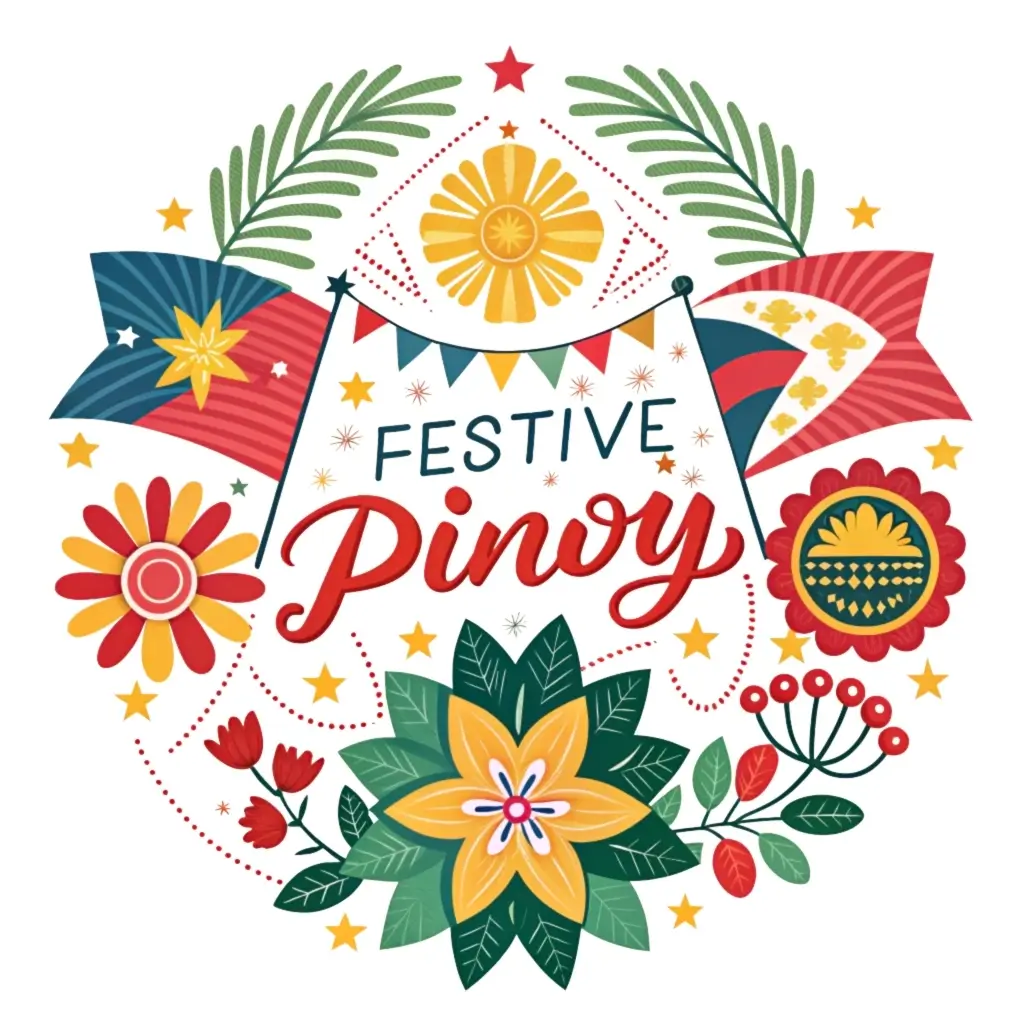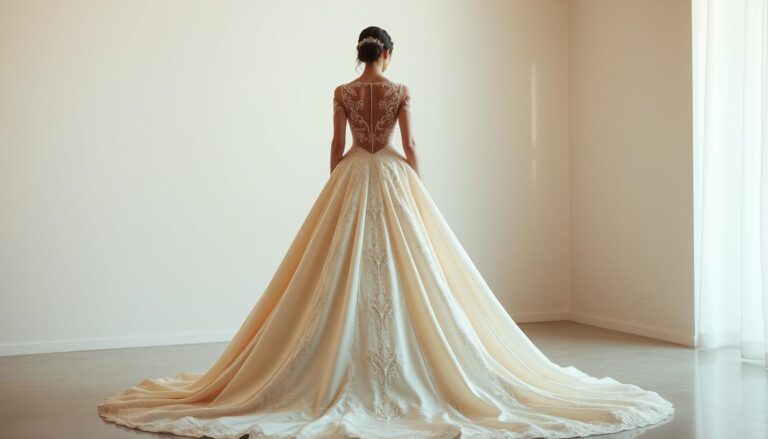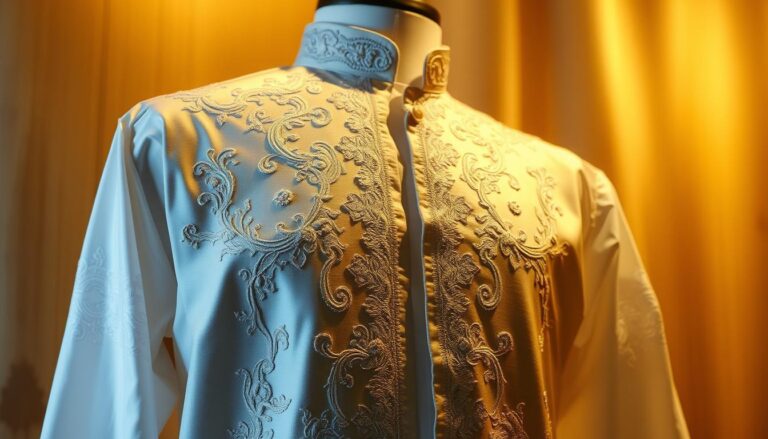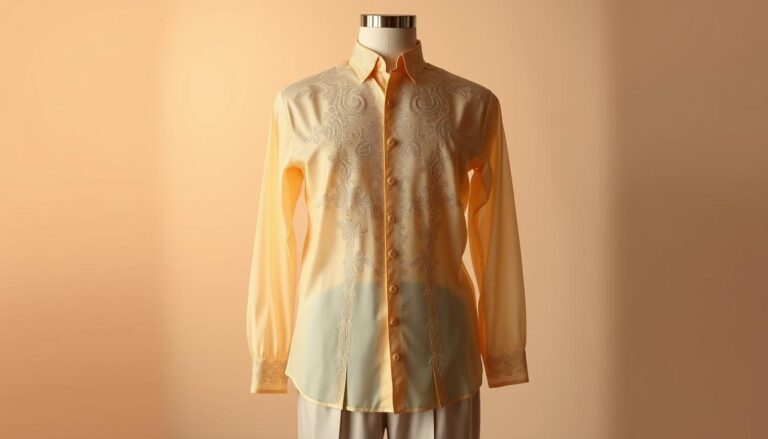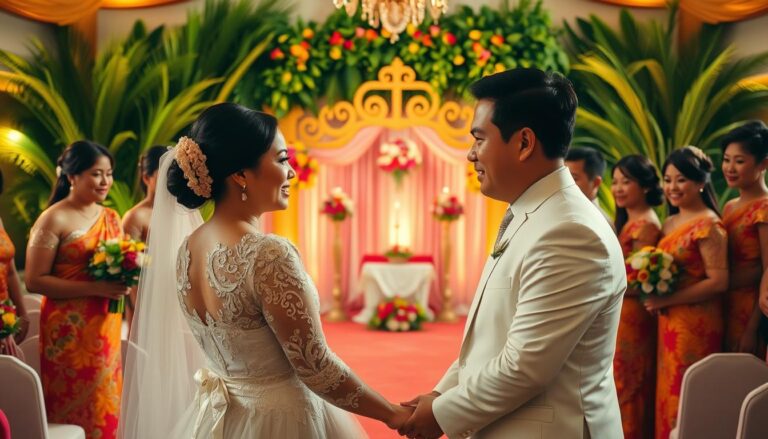Barong & Filipiniana for Foreigners: Cultural Guide
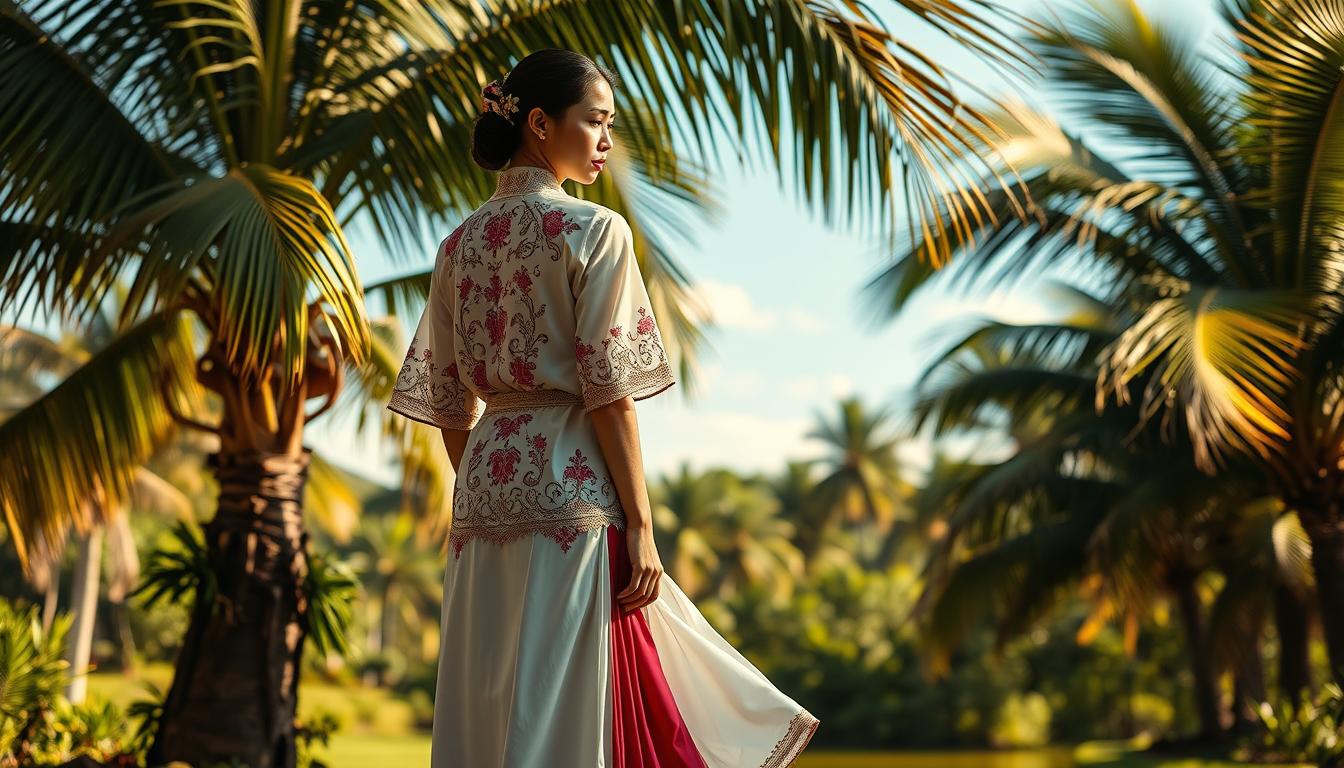
Discover the vibrant world of traditional Filipino clothing through this cultural guide. Whether you’re attending a wedding, exploring your heritage, or seeking elegant fashion, this resource connects timeless craftsmanship with modern style. These garments blend intricate designs with lightweight fabrics like organza and pineapple-derived piña, reflecting centuries of artistry.
Rooted in history, these outfits evolved from pre-colonial influences to Spanish-inspired silhouettes. Today, they symbolize national pride while adapting to contemporary tastes. Designers now experiment with bold colors and streamlined cuts, ensuring relevance for global audiences.
This guide offers styling tips, historical insights, and details about premium materials. Learn how to pair accessories or choose patterns for special occasions. Brands like BarongWorld showcase collections that honor tradition while prioritizing wearability, with over 160 options available worldwide.
Key Takeaways
- Traditional Filipino clothing combines historical roots with modern design innovations.
- Lightweight fabrics like pineapple fiber and organza ensure comfort and elegance.
- Contemporary styles maintain cultural significance while appealing to global audiences.
- Collections feature versatile options for weddings, cultural events, and everyday wear.
- Expert craftsmanship ensures garments last through generations.
Introduction to Filipino Traditional Clothing
Step into the heart of Philippine culture through its iconic garments that weave history into every thread. Rooted in centuries of craftsmanship, these outfits blend indigenous artistry with global influences, creating a visual language of identity.
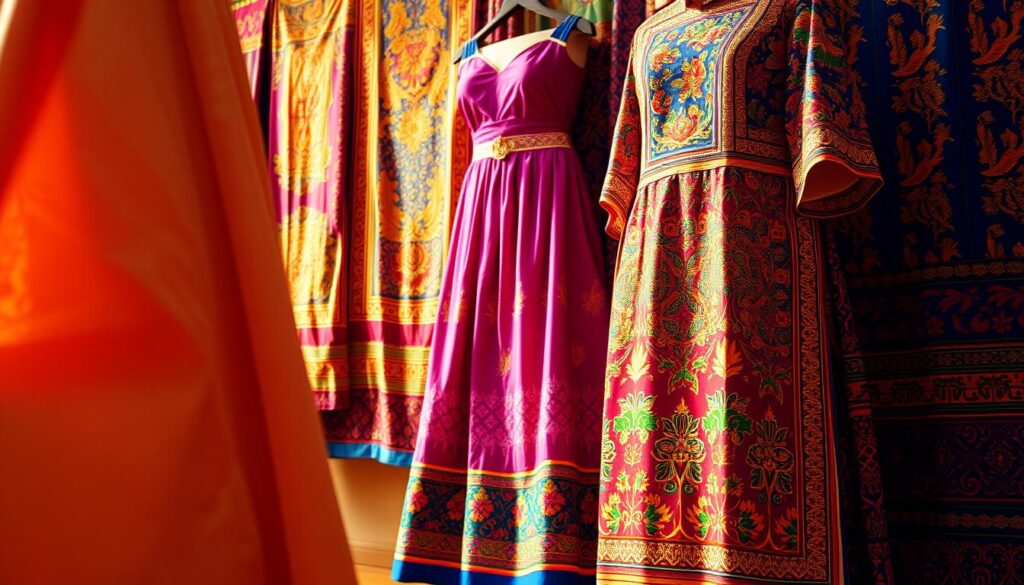
Overview of Filipino Heritage and Elegance
Early Filipino attire featured piña fabric made from pineapple leaves—a testament to sustainable innovation. Spanish colonization introduced intricate embroidery, transforming simple garments into symbols of status. The barong tagalog evolved from practical farmer shirts to formal wear with delicate calado lacework.
“These garments are not just fabric—they carry the soul of our ancestors.”
Modern designers preserve tradition while experimenting with bold colors and sleeker cuts. Key elements include:
| Traditional Features | Modern Adaptations |
|---|---|
| Handwoven natural fibers | Mixed fabric blends |
| Floral embroidery patterns | Abstract geometric designs |
| Floor-length silhouettes | Tailored shorter versions |
Significance for Global Audiences
International interest in Filipino clothing surged by 40% since 2020, according to Manila Fashion Week. Travelers and culture enthusiasts value how these pieces tell stories through texture and pattern. Lightweight fabrics like jusi make them ideal for tropical events or themed weddings.
Contemporary collections offer over 50 style variations, from minimalist necklines to dramatic butterfly sleeves. This versatility allows wearers to honor tradition while expressing personal flair—a bridge between worlds that grows stronger with every stitch.
History and Cultural Evolution of the Filipiniana Dress
The story of Philippine national attire unfolds through layers of colonial history and creative reinvention. What began as practical clothing transformed into a canvas for cultural expression, mirroring the nation’s resilience.
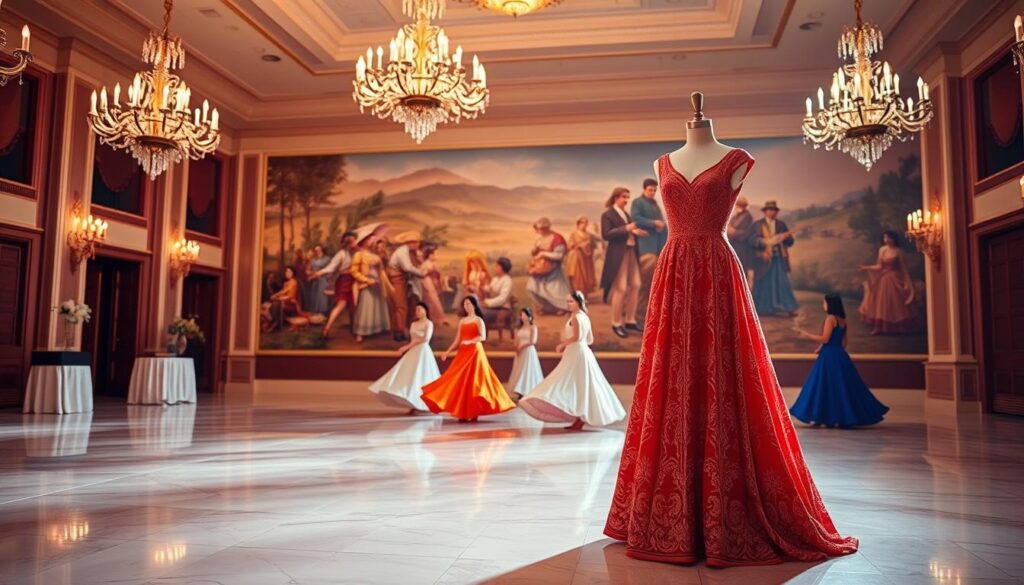
Origins from the Spanish Colonial Era
Spanish rule in the 1500s introduced the Baro’t Saya—a two-piece ensemble with a blouse and skirt. Initially crafted from pineapple fiber, it prioritized modesty while allowing airflow in tropical heat. Over time, this evolved into the Maria Clara gown, named after a heroine in Jose Rizal’s novels.
“Our dresses carry the whispers of rebellion and adaptation,” notes Manila-based historian Dr. Liza Park.
By the 1900s, the Traje de Mestiza emerged with butterfly sleeves and tailored waists. These designs blended European silhouettes with local craftsmanship, becoming staples for fiestas and formal gatherings.
Evolution into a Modern Statement
Post-independence designers reimagined traditional shapes using lightweight organza and machine embroidery. Today’s versions feature:
| Traditional Element | Contemporary Twist |
|---|---|
| Hand-stitched floral patterns | Metallic thread accents |
| Floor-length skirts | High-low hemlines |
Modern iterations retain symbolic details like capiz shell buttons while embracing minimalist cuts. This balance ensures relevance in global filipino fashion without erasing heritage. Over 75% of new designs now mix traditional motifs with avant-garde textures, proving cultural pride needs no expiration date.
Understanding “Barong & Filipiniana for Foreigners”
The intricate designs of Filipino clothing are more than aesthetic—they’re historical narratives. Each stitch and pattern reflects values like unity, resilience, and respect for nature. For global wearers, these garments become wearable art that sparks cross-cultural dialogue.
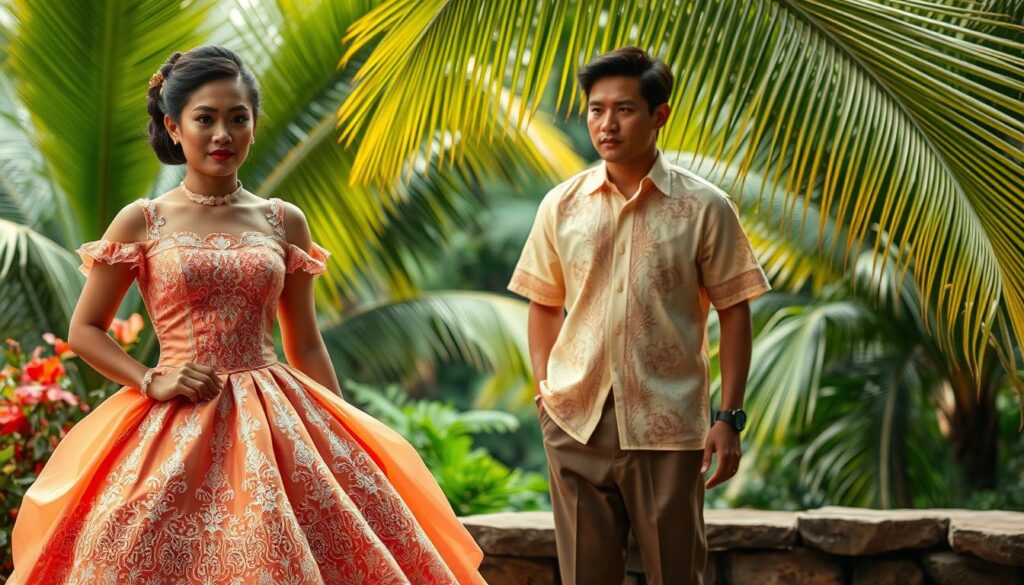
Cultural Insights and Symbolism
Traditional barong tagalog embroidery often depicts local flora, symbolizing harmony with nature. Capiz shell buttons represent purity, while geometric patterns echo indigenous weaving traditions. “Wearing these pieces connects you to generations of artisans,” explains BarongWorld’s lead designer.
| Symbol | Meaning |
|---|---|
| Floral motifs | Connection to land |
| Butterfly sleeves | Freedom & transformation |
| Sheer fabrics | Transparency in leadership |
Relevance in Today’s Global Fashion
Modern filipiniana dresses blend heritage with runway-ready silhouettes. Barong Republic reports 35% of sales now go to international buyers seeking unique formal events attire. Design innovations include:
- Shorter hemlines for cocktail parties
- Bold organza overlays on minimalist designs
- Convertible pieces for multiple occasions
These adaptations maintain craftsmanship through hand-finished details. Lightweight piña fabric remains popular for its breathability, proving tradition and modernity can coexist beautifully.
Modern Design Trends and Styles
Contemporary Filipino fashion bridges heritage and innovation through bold reimaginations of classic forms. Designers now fuse ancestral techniques with cutting-edge materials, creating garments that resonate across generations and borders.
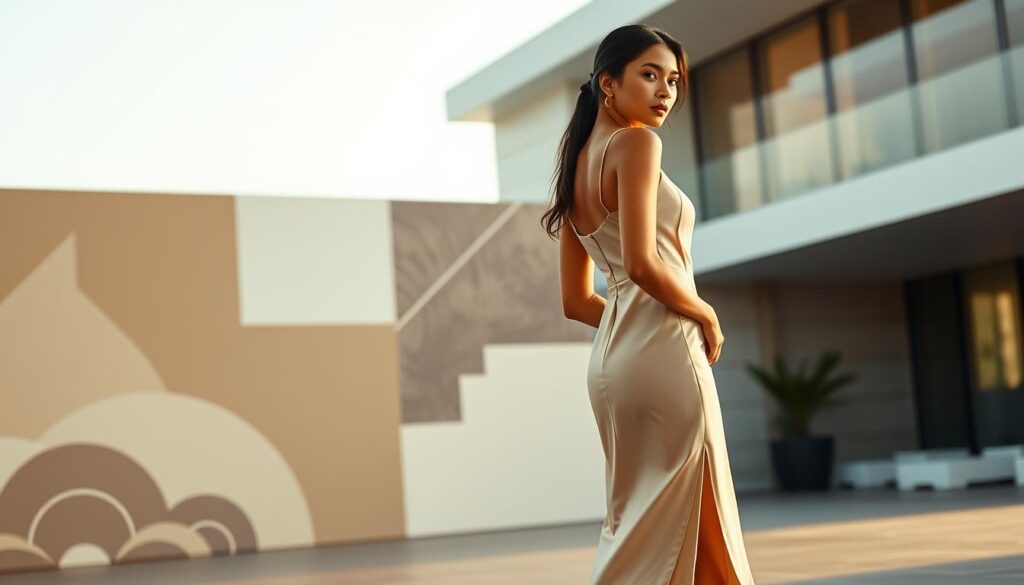
Traditional Versus Contemporary Silhouettes
Classic barong tagalog once featured loose cuts and floor-length skirts. Today’s versions showcase cropped jackets paired with tailored trousers or asymmetrical hemlines. Butterfly sleeves—a signature element—now appear in scaled-down proportions for cocktail events.
| Traditional Features | Modern Updates |
|---|---|
| Full-length traje de mestiza | High-low skirts with lace overlays |
| Opaque piña fabric | Sheer organza layered over satin |
Younger audiences gravitate toward convertible pieces. A single modern filipiniana dress might transform from floor-sweeping gown to tea-length ensemble using detachable panels.
Innovative Embroidery and Accents
Artisans now stitch metallic threads into geometric patterns rather than traditional florals. “We use laser-cut capiz shells as edging for necklines,” shares designer Rianne Castro. This approach maintains cultural symbolism while achieving minimalist elegance.
Key innovations include:
- 3D beadwork mimicking pineapple textures
- Digital printing on organza for gradient effects
- Magnetic closures replacing intricate buttons
Over 60% of BarongWorld’s collection now offers mix-and-match components. Clients personalize sleeve lengths or embroidery density through their page customization portal—a sale strategy boosting global orders by 45% since 2022.
Fabrics and Craftsmanship in Filipino Clothing
At the core of Philippine textile traditions lies a marriage of nature and artistry. Three materials dominate authentic designs: piña (pineapple fiber), jusi (banana-silk blend), and organza. Each offers distinct qualities that elevate garments from everyday wear to cultural treasures.
Natural Materials: Piña, Jusi, and Organza
BarongWorld artisans prioritize breathable, sustainable fabrics. Piña, derived from pineapple leaves, creates soft, translucent layers perfect for tropical climates. Jusi combines banana fibers with silk for smooth drapery in filipiniana dresses. Modern organza blends add crisp structure while maintaining airflow.
| Fabric | Source | Key Characteristics |
|---|---|---|
| Piña | Pineapple leaves | Lightweight, biodegradable, delicate sheen |
| Jusi | Banana & silk fibers | Drapes smoothly, resists wrinkles |
| Organza | Synthetic-natural blend | Holds shape, allows intricate pleating |
The Art of Filipino Embroidery
Hand-stitched patterns transform fabrics into storytelling canvases. Traditional calado lacework requires up to 200 hours per piece, often depicting local flora or geometric symbols. “Every stitch honors our ancestors’ patience,” shares a BarongWorld embroiderer.
Contemporary designs incorporate metallic threads and laser-cut accents while preserving heritage motifs. Proper care ensures longevity: dry clean delicate items and store in breathable cotton covers. These techniques blend old-world skill with modern durability, making each garment a wearable heirloom.
Customization and Sizing Guide
Finding your ideal fit starts with understanding the unique structure of traditional Philippine garments. Unlike Western clothing, these pieces require precise measurements to honor their flowing silhouettes while ensuring comfort.
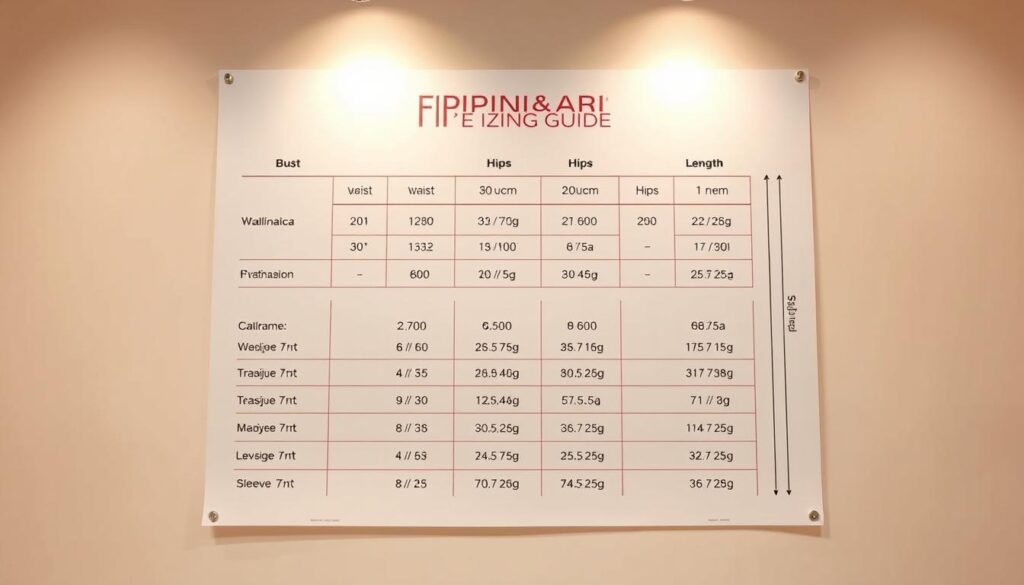
Tips for Accurate Measurements
Use a flexible tape measure for these key areas:
| Measurement | How-To |
|---|---|
| Bust | Wrap tape around the fullest chest area |
| Waist | Measure narrowest torso part + 4 inches |
| Hips | Circle widest pelvic point |
For virtual tailoring, email mabuhay@barongworld.com with these numbers. The brand’s 99% fit guarantee comes from preset size charts tested across 15 body types.
Customized Tailoring Options
BarongWorld’s online collection lets you mix elements like pineapple-fiber sleeves with modern necklines. Over 60% of clients choose:
- Adjustable butterfly sleeve lengths
- Embroidery density controls
- Convertible skirt layers
“The virtual tailoring made my wedding filipiniana dress feel like second skin,” shares a New York-based customer. Each order includes three progress updates before shipping, blending artisanal care with digital convenience.
Purchasing Experience at BarongWorld
Acquiring authentic Philippine garments has never been more accessible, thanks to BarongWorld’s global platform. Their digital storefront combines traditional craftsmanship with modern convenience, ensuring every order reflects personal style and cultural respect.
Online Ordering Process and Virtual Tailoring
BarongWorld’s page guides users through three steps: select a base design, input measurements, and choose embroidery patterns. The virtual tailoring tool adjusts sleeve lengths and necklines in real-time, with 98% accuracy reported by customers.
“The customization portal transformed my wedding guest dress into a perfect fit,” shared a client from Texas.
| Service Feature | Benefit |
|---|---|
| Measurement tutorials | Reduces sizing errors by 70% |
| Fabric swatch previews | Ensures organza or piña matches expectations |
Quality, Authenticity, and International Shipping
Every garment undergoes four quality checks before shipping. BarongWorld uses DHL and FedEx to deliver clothing worldwide within 7-14 days. Their team resolves customs issues proactively, maintaining a 4.8-star rating for reliability.
Clients receive:
- Digital progress photos during production
- Certificates of authenticity for heirloom items
- Care instructions to preserve delicate fabrics
With 160+ options in their collection, BarongWorld merges heritage techniques with contemporary designs—a bridge between Filipino culture and global wardrobes.
Wearing Your Filipiniana Dress for Special Occasions
Celebrate life’s milestones in garments that honor heritage while embracing contemporary elegance. These pieces shine brightest during moments demanding grace and cultural resonance.
Weddings, Formal Events, and Cultural Celebrations
For weddings, opt for a modern filipiniana dress with capiz shell accents. Pair it with gold filigree earrings and closed-toe heels. A delicate embroidery pattern adds sophistication without overwhelming.
Anniversaries or graduations call for streamlined silhouettes. Choose tea-length skirts with barong tagalog-inspired necklines. Metallic sashes or clutch bags elevate the look for formal occasions.
“Wearing my grandmother’s redesigned piña gown connected three generations at my quinceañera.” – Marisol T., San Diego
| Traditional Styling | Modern Twist |
|---|---|
| Butterfly sleeves | Detachable sleeve caps |
| Hand-beaded belts | Adjustable metallic chains |
Cultural festivals welcome bold experimentation. Try pairing a minimalist dress with handwoven shawls or abaca-fiber headpieces. These options balance respect for tradition with personal style.
For grand galas, floor-length organza gowns with laser-cut details make striking statements. Complete the ensemble with pearl-encrusted bakya sandals or satin pumps. Each choice reflects pride in craftsmanship while fitting seamlessly into global fashion landscapes.
Conclusion
Philippine attire stands as a living bridge between ancestral wisdom and global style. Through centuries of innovation, garments like the barong tagalog and filipiniana dress have evolved from cultural symbols to versatile wardrobe staples. Their delicate organza layers and pineapple-fiber textures continue to captivate wearers seeking elegance with historical depth.
Modern collections balance tradition with wearability, offering over 160 options for weddings or formal occasions. Custom tailoring ensures perfect fits through precise measurement guides, while artisans preserve hand-stitched embroidery techniques. Brands like BarongWorld maintain rigorous quality standards, delivering heirloom-worthy items worldwide.
These garments thrive in today’s fashion world by adapting to diverse needs—convertible sleeves for cocktail events, machine-washable fabrics for easy care. Each piece tells stories through capiz-shell details or geometric patterns, inviting wearers to celebrate heritage with every stitch.
Explore BarongWorld’s page to order authentic designs that honor craftsmanship. Whether honoring traditions or embracing contemporary flair, these timeless creations await your personal touch.
